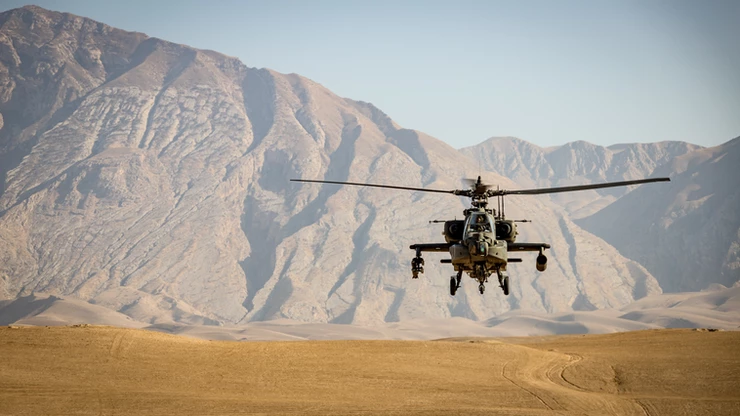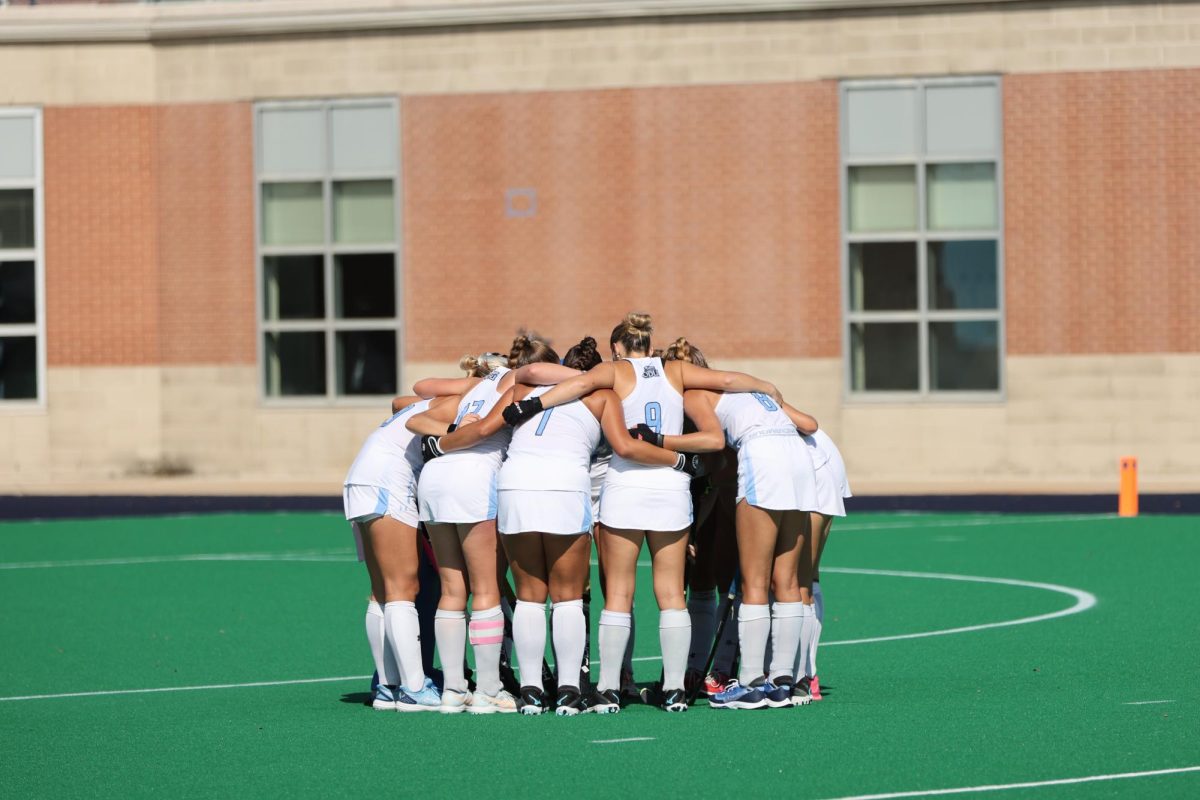The War in Afghanistan: What’s Next?
December 20, 2021
Originally published September 30, 2021.
For most ODU students, the war in Afghanistan has been an ongoing turmoil for their entire lives. For others, there was only a short period of time in their childhood before conflict in the Middle East began. For everyone on campus, the war is over for the U.S.
On Aug. 31, the U.S. worked on a deadline to evacuate all personnel. The Taliban officially declared Afghanistan as their Islamic Emirate. Celebrations were held by the Taliban in the evenings, with gunshots fired through the air ending the 20-year long military operation. The next day, President Biden addressed the nation, emphasizing how this war was dragged on for too long, and that it was now officially over.
Most watched on social media as numerous videos and pictures surfaced of Afghan people struggling to find their way out of the Hamid Kazai airport in Kabul after Taliban control. Many wondered why it ended the way it did, and why the U.S. was there in the first place.
What is commonly referred to as a 20-year war is actually a 40-year conflict. The complexity of the war’s history dates back to the Soviet era in the 1980s. Afghanistan was occupied by the Soviet during the Cold War, but were driven out by Afghan guerrillas called the Mujahideen in 1989. The Mujahideen had help from the CIA with weapons and funding while fighting off the Soviets. After the occupation, the failed sovereignty entered a bloody civil war with opposing sides fighting for power.
It was during this time that the Taliban would eventually be formed, made up of some of the Mujahideen and Pashtun nationalists. It could be argued that this was the first domino in the effects that led to the current crisis in Afghanistan.
“The underlying problem is the outside world brings its presumptions to Afghanistan about what it is,” says ODU International Politics professor Aaron Karp, “It’s very natural for Americans, Europeans, Latin Americans to look at Afghanistan and see a nation-state—and an important fact is there is neither a nation nor a state there.”
Karp doesn’t mean currently, though it still remains true. Instead, he emphasizes that Afghanistan has never existed.
“Afghanistan kind of isn’t. It’s what’s in the middle of lines on the map. It isn’t really there.” Before you look, yes, you can find Afghanistan on a map, but as Karp explains further, “There is something called Afghanistan and there are people who work for the Afghan state but the vast majority of the 35-40 million people who live there have no connection with the state.”
“The Taliban are overwhelmingly Pashtun,” Karp continues, “And they actually belong to a nation—the Pashtun nation.” Karp illuminated how the Pashtun people make up more than a third of the population of Afghanistan, especially on the southern border.
Though the Taliban, now made up of mostly Pashtun, quickly seized the capital of Afghanistan and started imposing strict Islamic law in 1996, it wasn’t until 9/11 that the U.S. eventually invaded Afghanistan in 2001 when another group, the al-Qaeda’s, along with their leader, Osama bin Laden, were linked to the attack. Bin Laden went into hiding in Afghanistan with the Taliban’s help. Months after the U.S. invasion, the Taliban were then forced out of power and an interim Afghan government was followed.
After a 20-year occupation, the Taliban eventually regrouped, recruiting more members into their militia throughout the rural areas. In 2021, the Taliban retook the capital. Part of the U.S. occupation initiatives included training the Afghan National Army to be self-sufficient upon eventual U.S. withdrawal. These efforts proved to be moot as the Taliban quickly and easily took over Kabul on Aug. 14.

“What we found was the Afghan National Army, the ANA, the soldiers were very hesitant to fight to the death for something they didn’t think was very important because they didn’t identify with it very much,” Karp provided some insight, “Whereas the Taliban had the advantage. The thing that they identify with, they identify with very strongly. They’re willing to fight for it and they’re willing to die for it.”
Essentially, the U.S. or other western nations occupied Afghanistan for over 20 years to prevent terrorism. This seems to be a controversy of why the U.S. withdrew ultimately. Not only has the U.S. spent over $5.8 trillion dollars towards its military-industrial complex and endless conflicts, but it has cost the lives of thousands of U.S. troops and Afghan civilians.
So, what now? Should students care?
“A good case could be made that they shouldn’t care. It’s not going to affect anything at all.” Says Karp.
“The problem was never the Taliban; it was always al-Qaeda. And al-Qaeda’s not gone—but they’re pretty much gone. So, as long as you can solve your al-Qaeda problem, the United States doesn’t have a Taliban problem.” Karp elaborates, “The Taliban is not a threat to international security, the Taliban is not a threat to the United States—they never have been.”
Karp explained how Taliban occupation could mean potential danger for Pakistan, a source of worry for the Chinese and a smaller source of worry for Iran—but not for the United States.
“It’s entirely a humanitarian problem for the United States now.” Karp comments.

There are those who would disagree with Karp, however. Though the Taliban has consented to the Doha Agreement in Feb. 2020, in which they agreed to not let al-Qaeda plot attacks against the United States from Afghan soil, conflicting evidence of the current allegiance between the Taliban and al-Qaeda exists.
The most conflicting evidence comes from the Taliban themselves. According to Foreign Policy Magazine, the Taliban released a statement on Aug. 31 countering accusations made by long-time foe, the Islamic State, that the Doha Agreement had not made the Taliban an agent of the United States.
“The Taliban of today is no different from the Taliban of yesterday, with the same exact ideology since it took charge in 1996, and whoever says otherwise or markets it in a different image is either ignorant of the Taliban ideology from its beginnings or has wishful thinking of some kind of deviation and change.” The Taliban text is quoted.
Other evidence relies on the bay’ah, or pledge, that al-Qaeda made to the Taliban. Bay’ah is considered a holy allegiance, and al-Qaeda has made this type of oath in both 1990 and 2016 when the Taliban unveiled a new leader.
On the opposing side, others argue that previously, al-Qaeda had paid up to $20 million a year for its haven in Afghanistan. In addition to having much smaller forces than it once did, al-Qaeda currently does not have the funding to continue to do so in the future.
If the Taliban and al-Qaeda flagrantly flaunt their partnership, possible re-entry of the nation-state could be in the cards for the U.S. However, like most things, this entirely relies on politics.
“The United States has always gone to war for matters of principle.” Karp continues, “It’s really hard to gain public support to maintain an international balance of power.”
This could be why, as of Sept. 1, President Biden’s approval rating has gone down by 43 percent.
“There is a bigger problem with the way the American political system is organized because there is no reward for [a] debate,” Karp weighs in, “We have a totally polarized system, and the thing that gets rewards is opposition.”
Issues that will probably become matters of opposition include actions made by Governor Northam, who welcomed more than 6,000 Afghan refugees to Virginia on Aug. 24. According to the UN refugee agency that is a drop in the bucket of the 2.5 million Afghan refugees worldwide that existed by 2018.
What started in our life as a response to terror attacks has become a wait-and-see situation for foreign policy experts, as well as other professionals in the field worldwide. However, it is agreed that conflict will always exist as long as oil is a commodity.
Giselle Donnelly, a research fellow at the American Enterprise Institute for Public Policy Research (AEI), is quoted as saying in an AEI reflective piece on the 9/11 attacks—the attacks that began the conflict in our lifetime—“It is hard to imagine that a lesser American presence in the region will do much to ameliorate these underlying problems or that what goes on in the region will stay in the region,” she reflected on the general conflict of the Middle East, “International energy markets—and stable prices—still run on fossil fuels; this is particularly true for mature and expanding East Asian economies. Russia remembers, and China foresees, that the balance of power in the Middle East is a key to global power. Moscow has found a way to rekindle its long-frustrated Middle East ambitions in Syria, and Beijing’s “mission” from the East is just beginning.”











